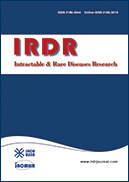Volume 1, Issue 4
Displaying 1-6 of 6 articles from this issue
- |<
- <
- 1
- >
- >|
Policy Forum
-
2012 Volume 1 Issue 4 Pages 139-143
Published: November 30, 2012
Released on J-STAGE: April 16, 2014
Download PDF (351K)
Reviews
-
2012 Volume 1 Issue 4 Pages 144-150
Published: November 30, 2012
Released on J-STAGE: April 16, 2014
Download PDF (1179K) -
2012 Volume 1 Issue 4 Pages 151-156
Published: November 30, 2012
Released on J-STAGE: April 16, 2014
Download PDF (2136K)
Brief Report
-
2012 Volume 1 Issue 4 Pages 157-160
Published: November 30, 2012
Released on J-STAGE: April 16, 2014
Download PDF (420K)
Original Article
-
2012 Volume 1 Issue 4 Pages 161-166
Published: November 30, 2012
Released on J-STAGE: April 16, 2014
Download PDF (402K)
Case Report
-
2012 Volume 1 Issue 4 Pages 167-169
Published: November 30, 2012
Released on J-STAGE: April 16, 2014
Download PDF (128K)
- |<
- <
- 1
- >
- >|
